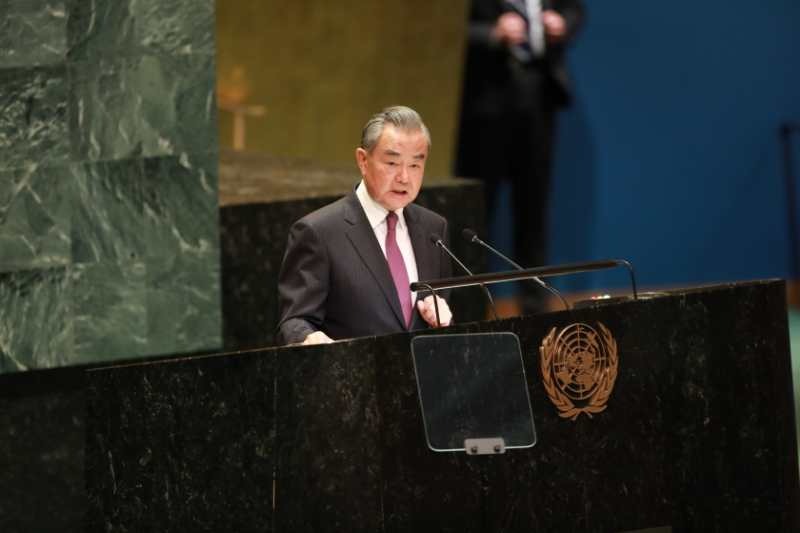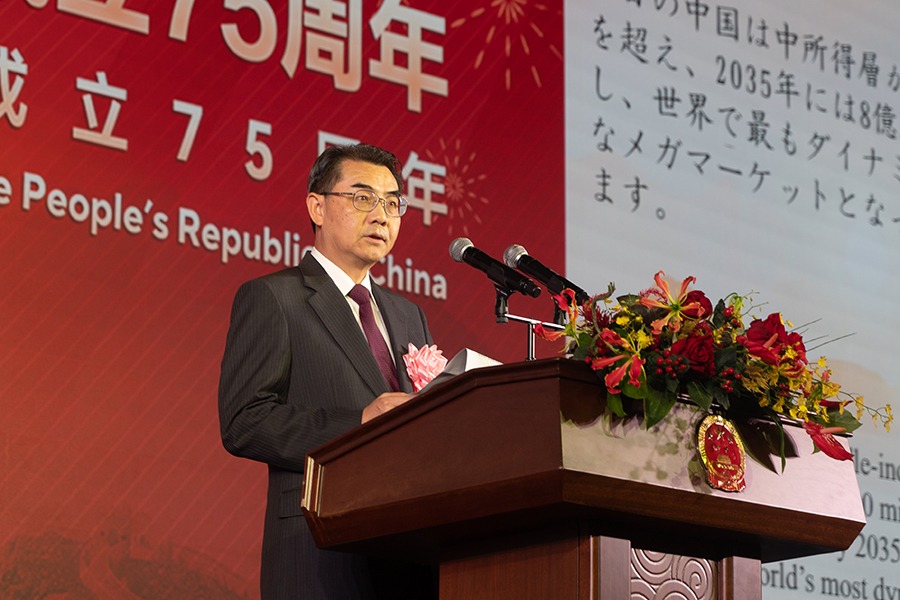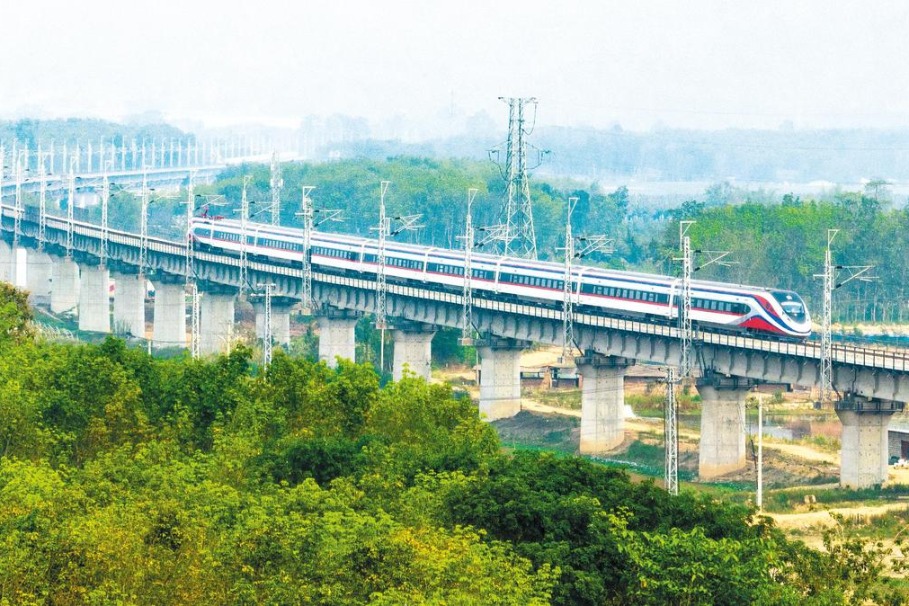Tokyo forum finds new momentum of Chinese economic growth


Chinese scholars visiting Tokyo shared their views on the current state and future trajectory of China's economy, refuting claims from some countries that China's economy has peaked and is facing overcapacity.
During a lecture held by the Chinese Embassy in Japan on Wednesday, Chen Weidong, director of the Research Institute of Bank of China, told the audience that based on the current situation, there is still significant growth potential in China's real estate market.
Currently, the per capita housing area in China is 25 square meters. As urbanization progresses and the average housing area per person expands, combined with the rigid housing demand from college graduates each year, it is estimated that China will need around 1 billion square meters of new housing annually until 2035, Chen said.
Overall, China's real estate market is seeking a new balance between supply and demand, aiming to maintain stable demand while ensuring housing prices do not experience significant adjustments, he added.
On the issue of local government debt, Chen pointed out that by the end of 2022, the debt ratio of China's local governments was 55.72 percent. Including about 60 trillion yuan ($8.29 trillion) in debt from local government financing vehicles, the overall debt ratio of local governments was approximately 105 percent.

The Chinese central government's solution is to set clear debt limits for local governments and implement special policy measures, such as refinancing bond issuance and short-term interest rate cuts, achieving debt swaps, optimize the debt maturity structure, and reduce interest burdens, he said.
"It's important to emphasize that a large amount of local government debt in China has been invested in high-quality assets, such as infrastructure and emerging industries. Therefore, both local and central governments have substantial asset bases to support this debt," he said.
According to a report by the Institute of Finance and Banking at the Chinese Academy of Social Sciences, local governments have a large asset scale to cover their debt burden.
Additionally, local governments have various measures to advance debt resolution. Therefore, Chinese government debt will not pose a systemic risk, Chen said.
Regarding remarks on China's so-called industrial overcapacity, Chen said capacity utilization should be viewed in a global market context rather than limited to a single country.
Globally, in 2023, the capacity utilization rates were approximately 77 percent for the United States, 79 percent for the European Union, 78 percent for Canada, 74 percent for India, and about 76 percent for China. Over the long term, China's capacity utilization has remained at a stable and reasonable level, he said.
Some countries claimed that China's new energy vehicle industry is facing so-called overcapacity. Tu Xinquan, dean of the China Institute for WTO Studies at the University of International Business and Economics, said from the perspective of the global green transition, NEVs are still in their early stages and there is significant market potential.
Currently, the global NEV fleet is around 30 million vehicles, with 20 million of these in China. However, the total number of vehicles worldwide is 1.45 billion. The share of NEVs is very small. Even converting only half of the existing gasoline vehicles to NEVs could take many years, Tu said.

The global penetration rate of NEVs, meaning the proportion of NEVs in new car sales, is only 15.7 percent, indicating significant growth potential, he added.
"The rapid development of China's NEV industry in recent years has raised some concerns, which essentially boil down to discomfort with new competition. This is understandable, but it's important to view the development of this emerging industry with a long-term perspective as it presents numerous possibilities," Tu said.
He noted that although Chinese NEV companies do have a relatively good first-mover advantage, having a first-mover advantage does not mean they will always lead, nor does it mean that latecomers will never have a chance.
"Thus, some countries are overreacting by adopting trade protection measures against China's leading position in the NEV field. Moreover, from the perspective of global climate change mitigation and achieving a green transition, the development of China's NEV industry should be encouraged, not feared," he said.
Some US and EU media attribute the success of China's NEV industry solely to government sup-port, which is a very one-sided view. In fact, China's success in this field is due to a combination of proactive government policies and an effective market, Tu said.
He further explained that the government does not pick specific companies to support directly with subsidies for NEVs. Instead, subsidies are given to consumers, allowing them to choose the products they prefer.
Moreover, China has significantly opened up market access in the NEV field, allowing many new car manufacturers to enter this sector, including private and foreign companies, rather than reserving market opportunities for State-owned enterprises, Tu said.
Over the past 40 years, China's economic growth has been heavily driven by factor inputs — capital and labor. In the future, China's economy is likely to be driven more by total factor productivity, or TFP, growth, said Liu Qiao, dean of the Guanghua School of Management at Peking University, who believes that it is possible for China to maintain a TFP growth rate above 2 percent.
One major source of TFP growth is technological advancement and improved resource allocation efficiency. China's re-industrialization, or digital transformation of industries, presents significant potential for productivity improvements. Developing new infrastructure necessary for re-industrialization requires substantial investment, which will create immense opportunities for technological change and efficiency gains, Liu said.

Another area that can boost TFP growth is carbon neutrality. To achieve the dual carbon goals, it is estimated that China will need to invest nearly 300 trillion yuan by 2050, he said.
Liu highlighted the importance of sustaining a certain level of investment rate and to invest in future key sectors, such as new infrastructure and strategic emerging industries.
In his opinion, future key areas include technological innovation. This involves creating a high-level circulation of technology, finance and industry, where financial support fuels technological advancements, driving industrial innovation.
Other key areas include carbon neutrality, the Internet of Things, high-end manufacturing, and in-vestment opportunities arising from the integration of rural populations into urban areas.
The Chinese government also has the space to further implement proactive fiscal policies, with many tools at its disposal, Liu said.
"China's national debt stands at 25 trillion yuan, about 20 percent of GDP. The central government has substantial room to issue national debt to address short-term challenges. Over the next decade, we believe there is room for China's national debt to increase by 60 to 70 trillion yuan," he said.
































